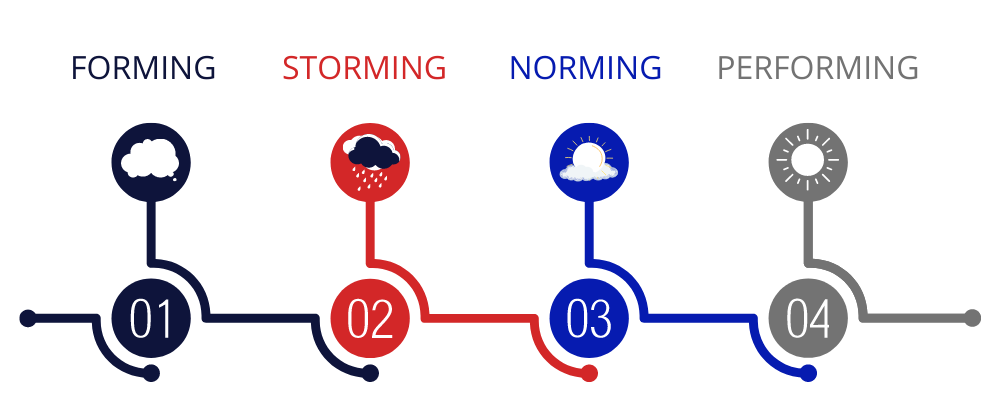There’s a lot of talk these days about team bonding and team building. But what’s the difference between the two? And when should you use each? There is often a misconception that team bonding and team building are the same thing. However, they are two very different things with different purposes.
So, what’s the difference between team bonding and team building? Team bonding is all about creating relationships within a team. It’s about developing trust and rapport. Team building, on the other hand, is about developing the skills and abilities of each individual. It’s about giving everyone the tools they need to be successful.
A well-structured team building program will always incorporate elements of both ‘building’ and ‘bonding’ your team so why is it important to know the difference? In simple… because each serves a different purpose. And each is essential to the success of any team. Beginning to consider team building and bonding as distinct elements of your learning and development system may assist you in more successfully meeting the strategic needs of your organisation.
Let’s break it down further and put it into the context of building a high performing team. Before a team can ‘build’ success they first must ‘bond’. A team that doesn’t bond will not be able to perform at their best.
Bruce Tuckman’s theory of team development Forming, Storming, Norming and Performing (FSNP) is often used to describe the stages a team goes through in order to become high functioning. Understanding when team bonding vs team building should be applied is an invaluable tool for any leader.

Forming
The ‘forming’ stage is all about getting to know each other. It’s when everyone is getting settled into their roles and starting to build relationships. This is where team bonding happens and should be aimed at creating meaningful connections with no regard for skill development…yet. The goal should not be geared towards a company objective, even though we know that connected teams with genuine rapport can have a beneficial influence. Remember the goal of team bonding is to build camaraderie through enjoyable and shared activities.
Team activities at this stage should focus only on fun and entertainment, for example, going out for drinks after work or hosting a team event like a scavenger hunt, Minute to win it, virtual cocktail masterclass or trivia. It’s important not to put too much pressure on the team during this stage and to let them get to know each other in a relaxed and informal setting.
Storming
The ‘storming’ stage is when those relationships are put to the test. It’s when conflict starts to arise and different viewpoints begin to clash. The team will benefit from both team bonding and team building here as both ‘playing’ together and ‘learning’ together will help the team to navigate the storm. Team building activities that encourage communication, conflict resolution, and trust can help the team stay on track while team bonding helps to keep relationships strong. Charity team-building activities are an excellent choice since they allow teams to embrace the big picture and bond through a common experience of giving back. For a more structured approach, a profiling tool such as Belbin team roles could be applied here to help the team quickly accept each other’s strengths and weaknesses and where each person fits within the team.
Norming
Norming is the stage when the team starts to come together and work as a unit. They develop norms and expectations for themselves and for each other. Now that the team has had time to bond, they should be well on their way to developing talents for success. To ‘build’ your team at this stage the focus should be on developing the skills of each individual with an aim towards collective success. It’s about giving everyone the tools they need to do their job well and to work effectively with others. Team building should now be aligned with company objectives and help teams work better together to achieve those objectives.
A team-building workshop (we recommend Fish! Or FUMISH) during the norming stage can help the team identify how to take the team to a whole new level of connectivity and performing and develop a plan to work together to reach their full potential. It’s critical, though, that you keep fostering camaraderie and maintaining team spirit. Happy teams are productive teams so continuing to enrich team bonds through the entire team development process is essential.
Performing
Performing is the stage when the team is working at their best. They are cohesive, trust each other, and are able to have difficult conversations. It can be tempting to get caught up in a winning mentality here and think that things will continue at this high level indefinitely. This is not the mindset to adopt and in fact, a team can move quickly backwards in the team development process.
Team building should be regularly applied in the performing stage of team development because it can help to sustain the high level of performance and prevent any potential negative triggers from taking the team backwards. Remember that a team is only as strong as its individual members and enabling your employees to engage in activities that inspire them both as individuals and as a group are essential for ongoing success. The best activities to apply at this stage are those that support team members to learn new skills and strategies they can apply in the workplace. Choose programs that promote communication, decision making, collaboration and creativity.
Finally, one of the most crucial aspects to consider while in the performing phase is their resilience; burnout is common at this level and can swiftly destroy a group. A fun team environment is like a Panadol to a headache – fun and laughter builds personal and team resilience and can keep a team performing at a high level but when stress is high, people need a reminder on how and why to do this!

“Human accomplishments result from the reciprocal influences of external circumstances, a host of personal determinants, including endowed potentialities, acquired competencies, reflective thought, and a high level of self initiative.”
– Bruce Tuckman
Bringing your team together can be a fun and rewarding experience for everyone involved when it’s done right. By understanding the difference between team bonding and team building, and when to apply each, you can ensure that your team has the best chance at success.
Do you have any questions about team building or need help finding the right activity for your team? We’re here to help! Send us an email or give us a call today. We’ll be happy to chat with you about your specific needs and recommend some activities that will get your team bonded and performing at their best!





Recent Comments